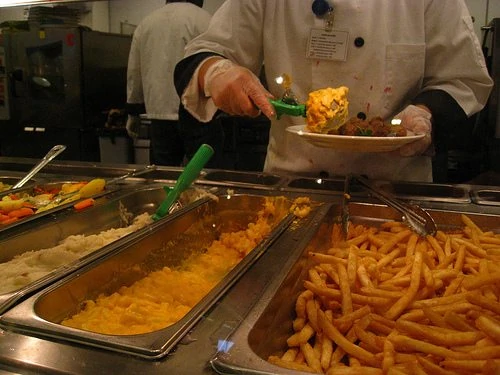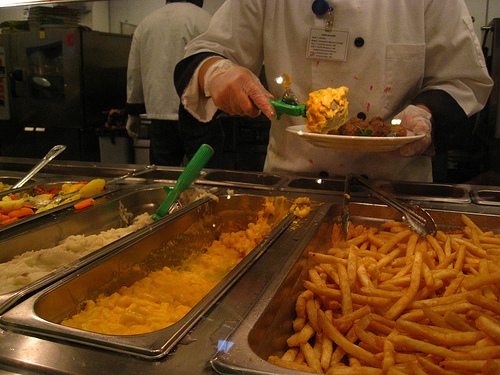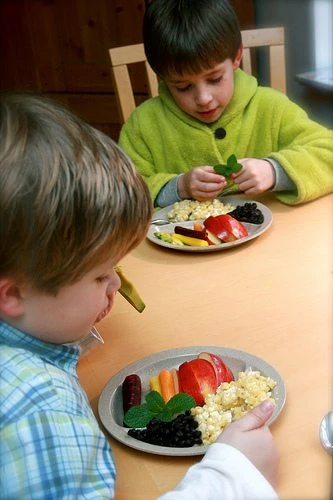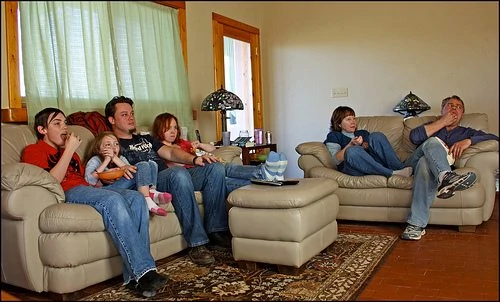If there’s any silver lining to the ongoing obesity epidemic, it’s that we’re finally coming to understand that what we eat matters – not just how much we eat but the quality of our food. Over the past decade, the conversation about this has been getting louder and more faceted as books like Fast Food Nation, Food Politics and The Omnivore’s Dilemma – not to mention films like Super Size Me and Food, Inc. – have captured the public’s imagination. As a society, we’ve debated ideal diets, sustainability issues, food safety and food security. We’ve come to know about food deserts and the damage that highly processed, industrial food does not just to our bodies but to the earth itself.
Lately, there’s been an increasing amount of talk about improving school lunches to improve student health, as well as help instill healthier eating habits outside of school. This comes on the heels of various legislation to get sodas and other sugary drinks out of the schools (or voluntary withdrawals such as that being done by PepsiCo) and in anticipation of revisions to the Child Nutrition Act. Michelle Obama’s Let’s Move! initiative includes improvement of school lunches as a key component in combating childhood obesity. Individual teachers are also bringing attention to the subject, such as “Mrs. Q,” who’s eating school lunch each day for a year, “just like the kids,” and blogging about it at Fed Up with Lunch: The School Lunch Project.
SpecialKRB/Flickr
Most prominent of the efforts to improve the quality of school lunches – some might say notorious – is, of course, Jamie Oliver’s Food Revolution, which began airing on ABC TV a few weeks ago. This reality show documents Oliver’s attempt to help residents of Huntington, West Virginia – rated the “most unhealthy city in the United States” – commit themselves to better nutrition, starting with improving school lunches, replacing the ubiquitous chicken fingers, fries, pizza and sweetened, flavored milk with more nutritious, whole food-based meals. Many have lauded his efforts, glad for the attention he brings to the subject, while others have lambasted him for arrogance, short-sightedness and an inability to appreciate the vast number of forces that combine to make school lunches less than healthy but better than nothing.
It’s clear that, as with any highly complex problem, there’s no silver bullet here. Change will have to come from many fronts and address many diverse issues. Likewise, each of us who cares about kids will have to take individual action to help bring positive change into being. That said, considering how teachers and school staff are the adults who kids spend the most time with other than their parents or guardians, we are in a unique position to help spur that change not just in the cafeteria but in the classroom and at home.
Any number of Yoga Calm activities can be integrated with a health curriculum. Even just nurturing awareness about the body and how it works can help children become more sensitive to how what they eat affects them physically. But one activity can be especially helpful in guiding children to consider what they eat, and that’s the “Mindful Snack,” included in our book Yoga Calm for Children. For it, children help prepare a fancy way of eating a small snack and then reflect on the food before eating – what it’s like, where it comes from, how it got to be here and so on. Through this simple activity, we can nurture consciousness about eating, as well as community, the connections among us and the need for each other.
With all the attention being given to the food kids eat and the need to teach them how to make wise choices, we encourage you to try this activity with your own students or kids – and if you do, to share the results in the comments.
Late-breaking news: Just as we were getting ready to publish the above post, we got confirmation that Michelle Markesteyn Ratcliffe, PhD, Farm to School Program Manager for the Oregon Department of Agriculture’s Food Innovation Center, will be a featured speaker at our upcoming Children’s Wellness Conference.
In her work at the ODA, Dr. Ratcliffe directs a wide-range of initiatives that promote farm to school programs and enables schools to feature healthy, locally sourced products in their cafeterias, and provide students with food and garden-based learning opportunities. She has worked on a variety of agricultural operations, direct marketed agricultural products to individuals and institutions, taught youth and adults about agriculture, and advocated for farm to school policies. Dr Ratcliffe’s research areas include the influence of farm to school and school gardens on students’ knowledge, attitudes, and behaviors related to fruit and vegetable consumption.
The Children’s Wellness Conference will be held at Still Meadow Retreat Center on June 23-24 and features presentations, discussion panels and expert guest speakers on a variety of children’s health topics including Yoga Calm applications for ADHD, preschool, counseling, family work, physical/health education, occupational therapy, working with adults and therapeutics. A unique gathering of creative professionals, the Children’s Wellness Conference also gives you the opportunity to provide feedback and guidance in charting Yoga Calm’s development.
Registration is now open. Learn more.





